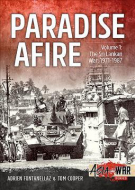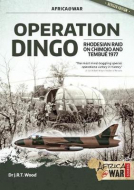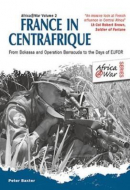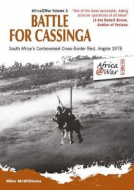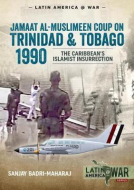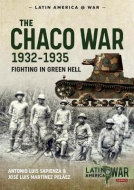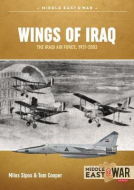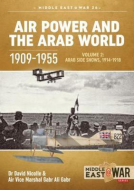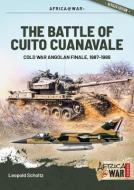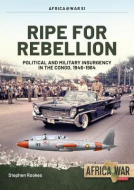
- Agriculture
- Architecture & Design
- Arts & Photography
- Biography
- Business
- Calendars and Diaries
- Childrens (All)
- Childrens (Illustrated)
- Childrens (Picture flats)
- Childrens (Te Reo)
- Classics
- Cooking, Food & Drink
- Craft & Hobbies
- Design (Art / Graphics)
- Design (Interiors)
- Education
- Fashion
- Fiction & Literature
- Fiction - Young Adult
- Gift Ideas
- Health & Wellbeing
- History
- Home & Garden
- Humour & Gift
- Instead of a Card Poems
- Military
- Music
- New Zealand
- NZ (History)
- NZ (Landscapes)
- NZ (Pictorial)
- Poetry
- Reference
- Religion & Faith
- Science & Nature
- Sport & Recreation
- Stationery
- Taschen : 40th Anniversary Edition
- Taschen : BA Basic Art
- Taschen : BU Bibliotheca Universalis
- Te Reo Māori
- Transport
- Travel
History (457)
|
Paradise Afire Volume 1 (Asia@War 6)
ISBN: 9781912390342 Author: Adrien Fontanellaz Publisher: Helion & Company When released into independence from Great Britain in 1948, the stunningly beautiful island of Ceylon, renamed Sri Lanka in 1972, was expected to become a sort ... When released into independence from Great Britain in 1948, the stunningly beautiful island of Ceylon, renamed Sri Lanka in 1972, was expected to become a sort of 'South Asian Singapore.' However, stable political order and bright economic prospects proved insufficient to maintain peace. A host of unsolved ethnic conflicts and social inequalities conspired to erupt into an armed conflict in 1971. When this broke out the entire Sri Lankan society was shocked to its core by a large-scale insurgency instigated by a Sinhalese Maoist group, JVP. Worse still, this was followed by the gradual buildup of several other Tamil groups in the north of the island. Following riots known as 'Black July' in 1983, Sri Lanka was ripped apart by a murderous war against Tamil insurgents, which caught the armed forces wrong-footed because of the government's reluctance to buildup its military to necessary levels. This came to a temporary stop in 1987 with the implementation of a peace arrangement virtually enforced by the government of India and a deployment of a large peacekeeping force of the Indian military. By that time, the notorious LTTE emerged as the most powerful Tamil insurgent movement and the principal opponent of the Sri Lankan armed forces. Eventually, the Indian military intervention proved to be only a temporary solution. The LTTE turned against the Indian military but suffered heavily in return. However, this provided some breathing space for the Sri Lankan military, which then launched a vicious and protracted counterinsurgency campaign against the JVP. The fighting thus went on. Relying on extensive studies of the Sri Lankan War with the help of firsthand sources, official documentation and publications from all of involved parties, this volume provides an in-depth and particularly detailed account of military operations during the first 16 years of this war. Bind: paperback Pages: 72 Dimensions: 210 x 297 mm Publication Date: 18-05-2018 |
$49.99 |
|
|
Operation Dingo (Africa@War 35)
ISBN: 9781912866816 Author: Dr J.R.T Wood Publisher: Helion & Company Startling in its innovation and daringly suicidal, Operation Dingo was not only the Fireforce concept writ large but the prototype for all the major Rhodesian a... Startling in its innovation and daringly suicidal, Operation Dingo was not only the Fireforce concept writ large but the prototype for all the major Rhodesian airborne attacks on the external bases of Rhodesian African nationalist insurgents in the neighboring territories of Mozambique and Zambia until such operations ceased in late 1979. Fireforce as a military concept is a 'vertical envelopment' of the enemy (first practiced by SAS paratroopers in Mozambique in 1973), with the 20mm cannon being the principle weapon of attack, mounted in an Alouette III K-Car ('Killer car'), flown by the air force commander, with the army commander on board directing his ground troops deployed from G-Cars (Alouette III troop-carrying gunships and latterly Bell 'Hueys' in 1979) and parachuted from DC-3 Dakotas. In support would be propeller-driven ground-attack aircraft and on call would be Canberra bombers, Hawker Hunter and Vampire jets. On 23 November 1977, the Rhodesian Air Force and 184 SAS and RLI paratroopers attacked 10,000 ZANLA cadres based at 'New Farm', Chimoio, 90 kilometres inside Mozambique. Two days later, the same force attacked 4,000 guerrillas at Tembué, another ZANLA base, over 200 kilometres inside Mozambique, north of Tete on the Zambezi River. Estimates of ZANLA losses vary wildly; however, a figure exceeding 6,000 casualties is realistic. The Rhodesians suffered two dead, eight wounded and lost one aircraft. It would produce the biggest SAS-led external battle of the Rhodesian bush war. Bind: paperback Pages: 72 Dimensions: 210 x 297 mm Publication Date: 04-09-2019 |
$49.99 |
|
|
France in Centrafrique (Africa@War36)
ISBN: 9781912866823 Author: Peter Baxter Publisher: Helion & Company France in Centrafrique explores the early colonial and post-colonial history of French Equatorial Africa with a particular emphasis on the role of the Central A... France in Centrafrique explores the early colonial and post-colonial history of French Equatorial Africa with a particular emphasis on the role of the Central African Republic in the Second World War and the Free French Movement. One of the key figures to emerge from this period, and a man who would shape the modern destiny of the Central African Republic, was Jean-Bédel Bokassa. Bokassa served alongside the Free French under General Charles de Gaulle and later in the metropolitan French military as an NCO in Indo-China. The narrative traces his ascent from these humble beginnings to his position as one of the region's most notorious dictators, exploring both his excesses of violence and personal aggrandizement and the role played by France and the wide-reaching Foccart intelligence network in his rise and fall. Baxter examines the past and present relationship of France with her erstwhile African colonial possessions, giving substance to the cause and effect of the many French interventions and the play of various individual personalities, both French and African, and how this has affected the current complexion of the region and its ongoing relationship with France. The book traces the overt and covert French military actions in the region, the rise of internal violence and insecurity and the increasing involvement of the international community in the series of coups and counter-coups that characterized the 1990s and the new century. Featured are Operation Barracuda, Operations Almandin I, II and II, Operation Boali and the various regional, international and European regional interventions. Bind: paperback Pages: 72 Dimensions: 210 x 297 mm Publication Date: 04-09-2019 |
$49.99 |
|
|
Battle for Cassinga (Africa@War 37)
ISBN: 9781912866847 Author: Mike McWilliams Publisher: Helion & Company Battle for Cassinga is the first-hand account by a South African paratrooper who was involved in the 1978 assault on the Angolan headquarters of PLAN, SWAPO's a... Battle for Cassinga is the first-hand account by a South African paratrooper who was involved in the 1978 assault on the Angolan headquarters of PLAN, SWAPO's armed wing. The battle, although a resounding success, suffered setbacks which could have proved disastrous to the South Africans had they not maintained the initiative. The improvisations made by Colonel Jan Breytenbach ensured that a flawed jump and inadequate intelligence did not adversely affect the outcome. The unforeseen Soviet-supplied SWAPO anti-aircraft guns used devastatingly in a ground role also threatened to derail the attack. A late appearance by a large Cuban/FAPLA (Angolan regulars) armored column, from the nearby town of Techamutete, threatened to engulf the lightly armed paratrooper force still on the ground. A fierce rearguard action, together with the almost suicidal actions of the South African Air Force pilots, ultimately saved the day. McWilliams examines why the South African government took the political risk in attacking 'Fortress Cassinga' in a cross-border operation that would clearly attract the ire of the world. He studies SWAPO claims that Cassinga was a refugee camp guarded by only a few PLAN soldiers, explaining why Sam Nujoma, the SWAPO leader, had no option but to perpetuate this falsehood. He looks dispassionately at all the players involved: SWAPO/PLAN and their commander Dimo Amaambo who fled the field of battle; the Cuban and FAPLA intervention; and the South African paratroopers, led by Breytenbach, who not only had to combat a determined enemy but also senior South African staff officers. Above all, it is a soldier's tale which pays homage in equal parts to the bravery of the paratroopers and the determination of the PLAN fighters who stood to their guns until annihilated. Bind: paperback Pages: 72 Dimensions: 210 x 297 mm Publication Date: 16-10-2019 |
$49.99 |
|
|
Trinidad 1990 (Latin America@War 19)
ISBN: 9781913118723 Author: Sanjay Badri-Maharaj Publisher: Helion & Company Trinidad has the distinction of contributing the highest number of recruits per capita to the cause of notorious 'Islamic State'. The case of Trinidad and Toba... Trinidad has the distinction of contributing the highest number of recruits per capita to the cause of notorious 'Islamic State'. The case of Trinidad and Tobago (usually abbreviated 'Trinidad') makes for an interesting study as on the face of it, a well-integrated Muslim population, a strong welfare state and an absence of political persecution on any religious or racial basis should not provide fertile recruiting ground for Jihadist ideology. However, the converse is most certainly the case as not only is attraction to such extremist causes growing but the numbers of Trinidadian nationals willing to fight for IS is also increasing. What is happening in Trinidad is symptomatic of a broader problem as Jihadi groups have widened their reach where apparently unconnected groups can now ally with the ideology and resource bases of better known groups without formally being part of them. The flirtation with Islamist ideology on Trinidad dates back many years and through a combination of incompetence, political naiveté and unfortunate compromises. Indeed, the country faced the only Islamist coup in the entire Latin America - Caribbean region and the hemisphere. Bind: paperback Pages: 68 Dimensions: 210 x 291 mm Publication Date: 17-09-2020 |
$49.99 |
|
|
The Chaco War 1932-1935 (Latin America@War 20)
ISBN: 9781913118730 Authors: Antonio Luis Sapienza Fracchia, Jose Luis Martinez Pelaez Publisher: Helion & Company The Chaco War was the first modern conflict in South America. Over time, it became the topic of many volumes published in both Bolivia and Paraguay - first by v... The Chaco War was the first modern conflict in South America. Over time, it became the topic of many volumes published in both Bolivia and Paraguay - first by veterans, such as the commanders-in-chief, and the commanders of army corps', regiments or battalions, and by other ranks, in the form of personal memoirs or wider histories, and using a wide variety of sources. Subsequently, the conflict attracted attention of many foreign writers, foremost from the United States of America and Europe, who researched it with great interest. Hundreds of related articles have also been published. Nevertheless, The Chaco War, 1932-1935 is the first ever concise history of this conflict, providing the reader with the full background to this conflict, the military build-up of the Bolivian and Paraguayan armed forces, a blow-by-blow account of Bolivian penetration of this territory since the early 20th Century, precise details on troops mobilized for the war by both sides, all of the battles fought between the belligerents, and their casualties. Bind: paperback Pages: 72 Dimensions: 210 x 291 mm Publication Date: 30-09-2020 |
$49.99 |
|
|
Wings of Iraq: Volume 1 (Middle East@War 27)
ISBN: 9781913118747 Authors: Tom Cooper, Milos Sipos Publisher: Helion & Company Officially established on 22 April 1931, around a core of five pilots and 32 aircraft mechanics, the Royal Iraqi Air Force was the first official native militar... Officially established on 22 April 1931, around a core of five pilots and 32 aircraft mechanics, the Royal Iraqi Air Force was the first official native military flying service of any Arab country. Founded to support the Iraqi armed forces and the British against revolts by local tribes, it saw extensive combat and gradually grew into a potent force. During the Anglo-Iraqi War of 1941, it became involved in its first conventional campaign in support of an anti-British coup but was destroyed as a fighting force. It was still recovering when deployed in combat again, this time against Israel in the course of the Palestine War of 1948-1949. During the 1950s, the Royal Iraqi Air Force experienced a phase of unprecedented growth through the acquisition of several batches of modern British-built aircraft. The 14 Tammuz Revolution of 1958 toppled the British-imposed monarchy and cut the ties to London. For the next five years, the Iraqi Air Force (IrAF) maintained close links to the USSR and became the first Arab air force to operate types like the MiG-19 and MiG-21, and was the first equipped with Tupolev Tu-16 medium jet bombers. Through the 1960s, the IrAF played a dominant role in internal Iraqi politics, determining the fate of the nation to an unprecedented degree, became involved in the June 1967 War with Israel, and were instrumental in the putsch of 1968 that brought the Ba'ath Party to power. While virtually 'born in battle', the Iraqi Air Force remains one of the least known and most misinterpreted military services in the Middle East. Richly illustrated, Volume 1 of Wings of Iraq provides a uniquely compact yet comprehensive guide to its operational history, its crucial officers and aircraft, and its major operations from 1931 to 1970. Bind: paperback Pages: 96 Dimensions: 210 x 291 mm Publication Date: 14-10-2020 |
$49.99 |
|
|
Air Power and the Arab World 1909-1955: Volume 2 (Middle East@War 26)
ISBN: 9781913118761 Author: David Nicolle Publisher: Helion & Company At a time when multiple wars are raging across much of the Middle East, it is almost forgotten that it was Abu al-Qasim Abbas ibn Firnas ibn Wirdas at-Takurni -... At a time when multiple wars are raging across much of the Middle East, it is almost forgotten that it was Abu al-Qasim Abbas ibn Firnas ibn Wirdas at-Takurni - an Andalusian inventor, physician and engineer - who was the first person to undertake experiments in flying with any degree of success. That was back in the 9th Century A.D. Nigh on a thousand years later the Arab World's critical strategic location made it almost inevitable that these regions would be drawn into the imperial rivalries of the leading European powers, while the Ottoman Empire struggled to maintain its existing position in the area. This in turn meant that the first bombs to be dropped by military aircraft fell on Arab soil. Not surprisingly, as the Arab countries slowly achieved their independence, they too wanted to have air forces. In 1948 the first such Arab air forces were thrown into battle in an ill-fated attempt to keep Palestine as a primarily Arab country. Based on decades of consistent research, but also newly available sources in both Arabic and various European languages, and richly illustrated with a wide range of authentic photography, Volume 2 of the Air Power and the Arab World, 1909-1955 mini-series continues the story of the men and machines of the first half century of military aviation in the Arab World. Bind: paperback Pages: 72 Dimensions: 210 x 291 mm Publication Date: 30-09-2020 |
$49.99 |
|
|
The Battle of Cuito Cuanavale (Africa@War 48)
ISBN: 9781913336073 Author: Leopold Scholtz Publisher: Helion & Company In the broad history of the Cold War, the Battle of Cuito Cuanavale was the climax of a far-off, but nonetheless important African war. It was waged between the... In the broad history of the Cold War, the Battle of Cuito Cuanavale was the climax of a far-off, but nonetheless important African war. It was waged between the apartheid South African Defence Force (SADF) and the armed forces of the communist MPLA government in Angola and the People's Republic of Cuba. Led by Soviet generals, the MPLA embarked on a grand offensive in order to knock out the pro-Western rebel movement UNITA in southeastern Angola. As UNITA's survival was crucial to South Africa's military strategy in fighting its own counter-insurgency war against the South West African rebel movement SWAPO, the SADF stepped in with a single mechanised brigade and broke the back of the overwhelming MPLA offensive. The MPLA forces were subsequently driven back over a hundred kilometres, before the SADF advance was finally stopped just short of the town of Cuito Cuanavale. Since then, a hot war of words have been waged about who actually won. In this book, a South African military historian and retired journalist examines the campaign, the adversaries, and their achievements on the basis of his research in SADF archives. His scrupulous attempt at objectivity results in interesting conclusions. While the MPLA lost hands down, he posits a draw between the Cubans and the SADF. Although having been a South African reservist officer himself, he has critical words for the SADF leadership. Many misunderstandings, some of which were purposefully created by Cuban dictator Fidel Castro, are put to rest. While not sharing Castro's political beliefs, he acknowledges Castro's military acumen and political savvy in extricating his country from an unwinnable war while smelling of roses. The analysis contains many lessons about mechanised warfare in the African context from which both laymen and military professionals alike may learn. Bind: paperback Pages: 72 Dimensions: 210 x 297 mm Publication Date: 10-02-2020 |
$49.99 |
|
|
Ripe for Rebellion (Africa@War 51)
ISBN: 9781913336233 Author: Stephen Rookes Publisher: Helion & Company After many years of political struggle, the Belgian Congo was finally granted its independence in June 1960. Becoming the Republic of the Congo and later the D... After many years of political struggle, the Belgian Congo was finally granted its independence in June 1960. Becoming the Republic of the Congo and later the Democratic Republic of the Congo, what was supposed to be a momentous occasion in the country's history was rapidly transformed into a bitter internecine political battle which would tear the Congo apart. Within weeks, two Congolese provinces had declared their own independence putting the Congo's economic future in jeopardy. Recruiting hundreds of white mercenaries to sustain its secession, mineral-rich Katanga then attempted to fight off all attempts to bring it back into the fold. By early 1963 the mercenaries had been forced to leave by the UN, but other major outbreaks of armed protest against the Congolese government were taking place. The most significant of these were the Stanleyville, Kindu and Kivu Rebellions led by supporters of Patrice Lumumba, the former Prime Minister assassinated in January 1961. With the Soviet Union, the Republic of China and radical African governments all aiding rebel movements, what was a series of localized conflicts became a proxy war between the East and the West. Not wishing to see the Congo fall under what it perceived as 'communist domination', the United States then began to provide its own form of military assistance to government forces. Ripe for Rebellion is the first of two volumes examining the so-called 'Congo Crisis'. Based on extensive research in multiple official archives, it throws entirely new light upon developments in a country which many US citizens of the time believed would become the next major battlefield. Richly illustrated, it provides a detailed account of the global political dynamics which led to civil war and encouraged so many to take up arms, and an intricate reconstruction of the military role played by the United States from 1964. The story told in Ripe for Rebellion will be continued in For God and the CIA, though each volume stands alone. Bind: paperback Pages: 88 Dimensions: 210 x 297 mm Publication Date: 28-12-2020 |
$49.99 |


